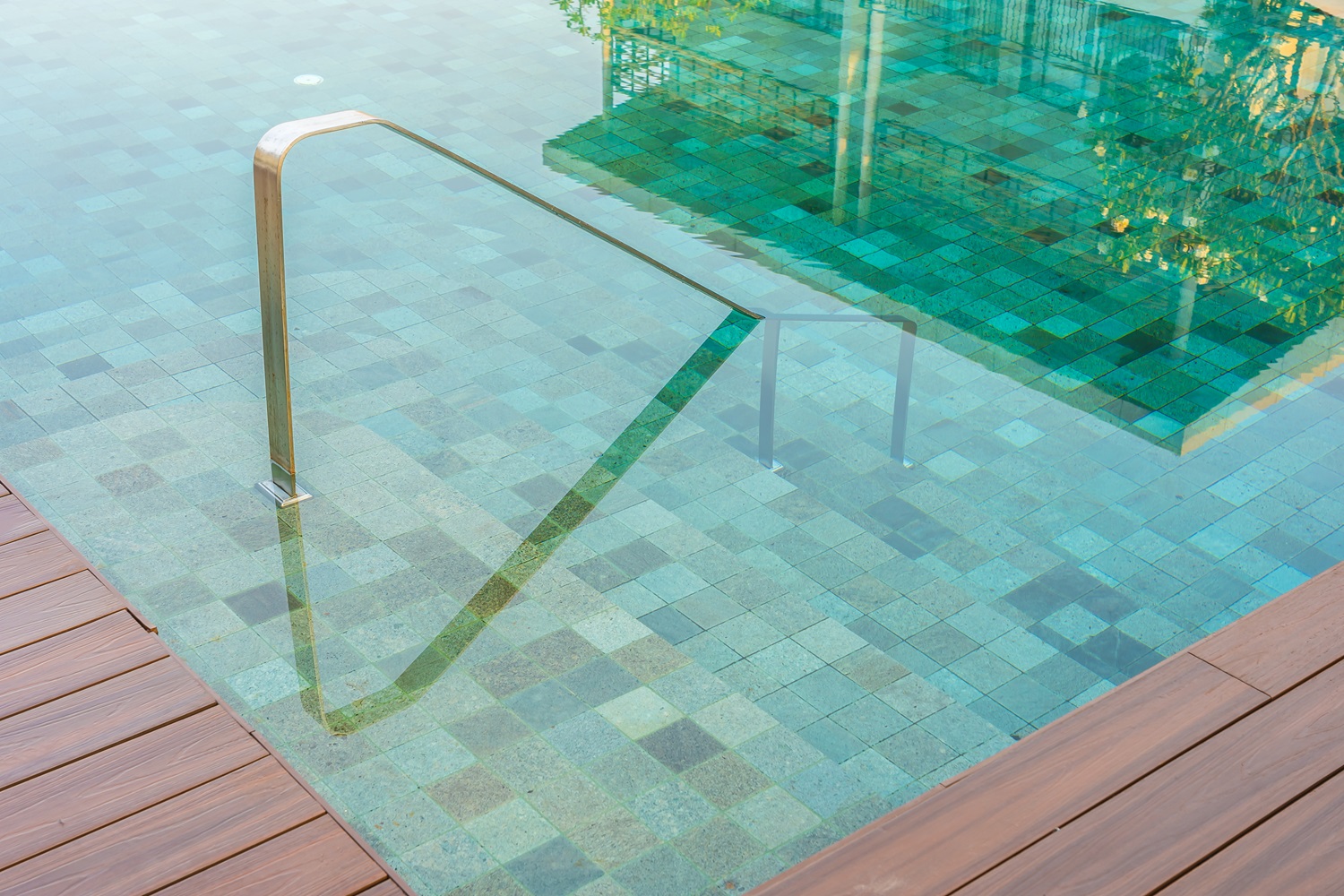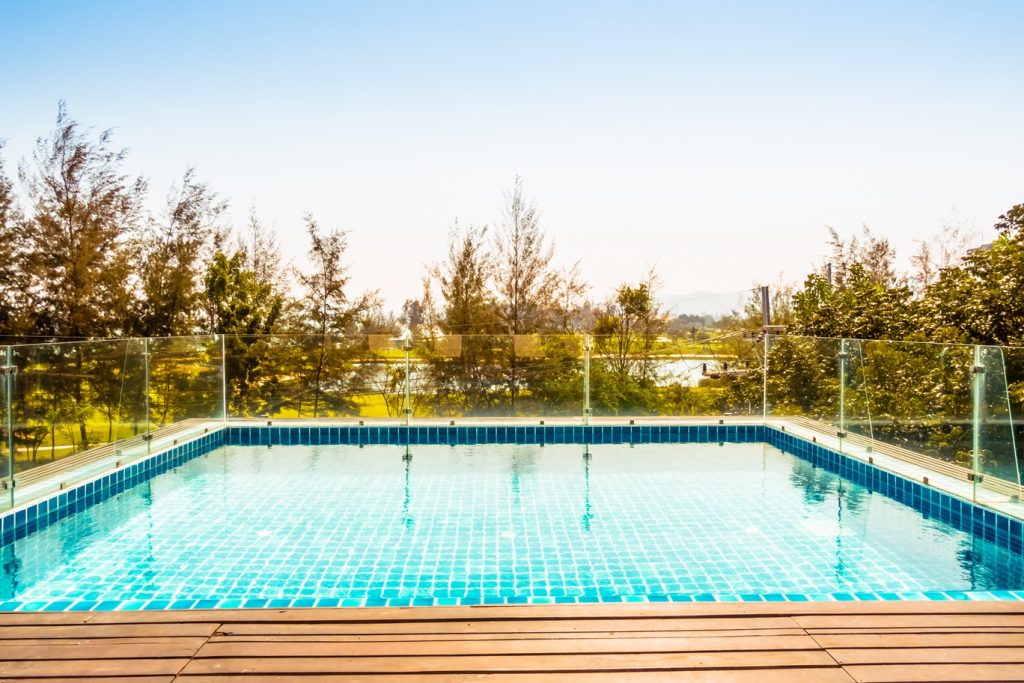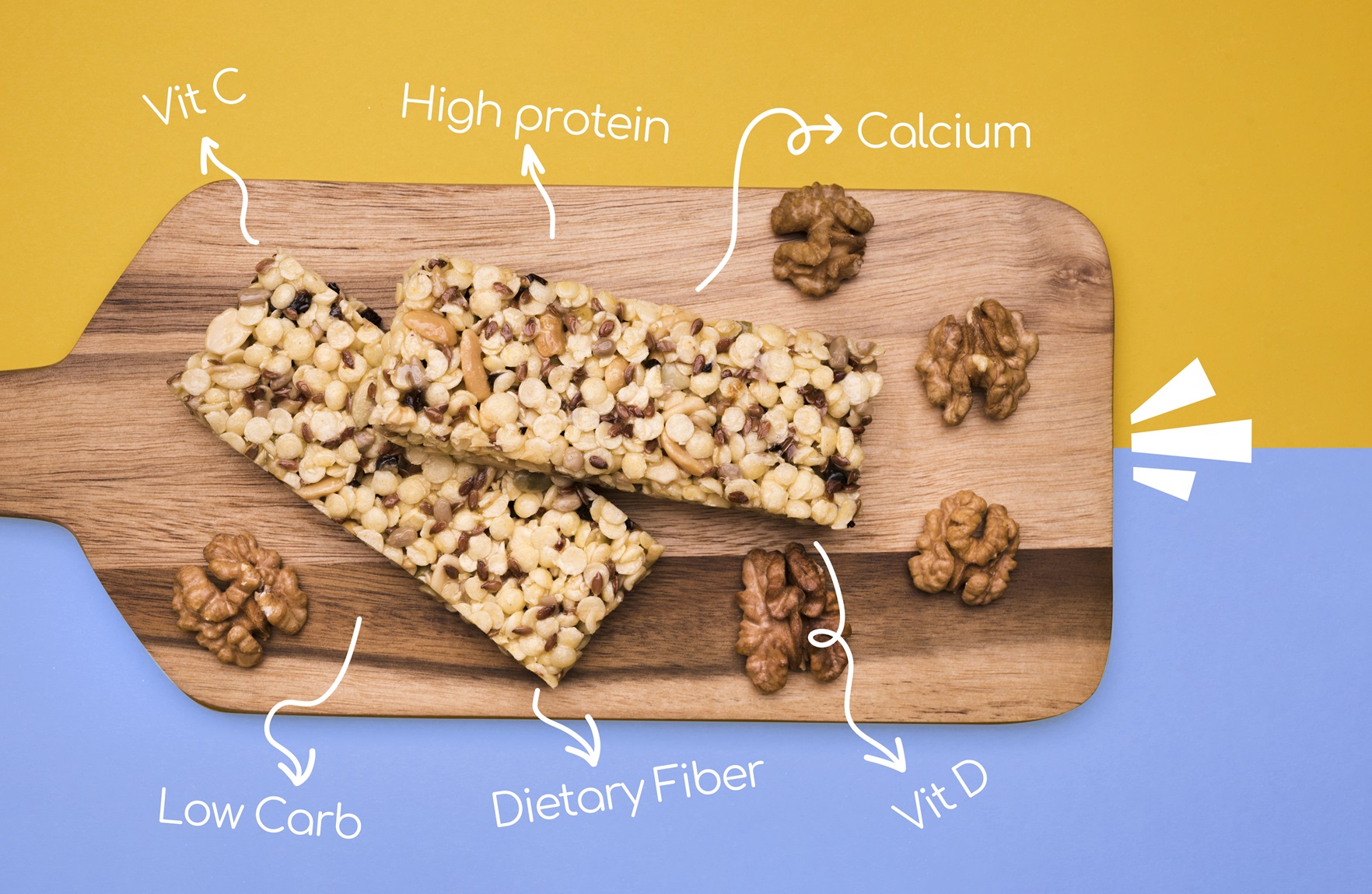
Robotic pool cleaner has become a game-changer in the world of pool maintenance, offering unmatched convenience and efficiency to pool owners. These intelligent devices are designed to autonomously navigate the pool, scrubbing walls, vacuuming debris, and ensuring sparkling clean water without the need for manual intervention. With advanced features such as programmable cleaning schedules, smart navigation systems, and energy-efficient operation, robotic pool cleaners have transformed the way pools are cleaned, making it easier than ever to enjoy a pristine swimming experience.
Best Pool Cleaner Robot:
The best robotic pool cleaner is typically rated based on several key factors that contribute to its overall performance, convenience, and reliability. These factors often include:
Cleaning Performance:
A top-rated robotic pool cleaner should effectively remove debris such as leaves, dirt, algae, and other contaminants from the pool’s floor, walls, and waterline.
Navigation System:
Efficient navigation is crucial for covering the entire pool area without missing spots or getting stuck. Advanced navigation systems use sensors, algorithms, and mapping technology to navigate obstacles and optimize cleaning paths.
Filtering Capability:
The quality and capacity of the cleaner’s filters determine how well it can trap and retain debris. Large-capacity filters reduce the frequency of emptying and cleaning, enhancing convenience.
Energy Efficiency:
A highly-rated robotic pool cleaner should be energy-efficient, consuming minimal electricity during operation. Look for models with energy-saving features such as variable speed motors and smart cleaning algorithms.
Durability and Build Quality:
A durable construction and reliable components contribute to the longevity of the robotic pool cleaner. Stainless steel components, high-quality brushes, and sturdy tracks or wheels are indicators of a well-built device.
Convenience Features:
Additional features such as programmable cleaning schedules, remote control capabilities, smartphone app integration, and easy maintenance access can enhance the user experience and convenience.
Customer Reviews and Reputation:
Consider the experiences and feedback of other users through customer reviews and ratings. A reputable brand with positive reviews and a history of reliable products is often a good indicator of a top-rated pool cleaner robot.
By evaluating these factors and comparing different models based on your specific pool requirements, budget, and preferences, you can determine which pool cleaner robot rates as the best option for your needs.
Cordless Robotic Pool Cleaner:
Cordless robotic pool cleaners offer the advantage of not being tethered to a power source, providing greater freedom of movement and convenience during cleaning sessions. These cleaners typically use rechargeable batteries to operate and can navigate the pool autonomously without the need for external power cords. Here are some key benefits and considerations of cordless robotic pool cleaners.
Benefits:
Following are some of the benefits for using cordless robotic pool cleaner:
Freedom of Movement:
Cordless cleaners can move freely throughout the pool without being restricted by power cords, allowing them to cover the entire pool area more efficiently.
Ease of Use:
Without cords to manage, operating a cordless robotic pool cleaner is often simpler and more user-friendly, requiring less setup time and effort.
Safety:
Eliminating cords reduces the risk of tripping hazards and entanglement, making cordless cleaners safer to use around the pool area.
Versatility:
Cordless cleaners can be used in pools of various shapes and sizes, including above-ground pools, without the limitations imposed by cord length.
Portability:
Since they are not dependent on a fixed power source, cordless cleaners are more portable and can be easily moved or transported between pools if needed.
Considerations:
Also some considerations which needs to be addressed:
Battery Life:
The runtime of cordless robotic pool cleaners is determined by the battery capacity, and some models may require recharging during longer cleaning sessions.
Charging Time:
It’s essential to consider the charging time required for the cleaner’s batteries to ensure uninterrupted cleaning sessions and plan charging schedules accordingly.
Maintenance:
Regular maintenance of the rechargeable batteries is necessary to ensure optimal performance and longevity of the cordless cleaner.
Cost:
Cordless robotic pool cleaners may be priced slightly higher than their corded counterparts due to the additional battery technology and features.
Some popular cordless robotic pool cleaner brands include Dolphin, Aquabot, and Polaris, offering various models with different features and capabilities to suit different pool sizes and cleaning requirements.
Aiper Cordless Robotic Pool Cleaner
The Aiper Cordless Robotic Pool Cleaner is a popular choice among pool owners seeking the convenience and freedom of a cordless cleaning solution. Here are some key features and benefits of the Aiper Cordless Robotic Pool Cleaner:
Cordless Design:
The Aiper cleaner operates without the need for cords, providing unrestricted movement and coverage throughout the pool.
Rechargeable Lithium-ion Battery:
It is equipped with a powerful rechargeable lithium-ion battery that offers extended runtime for thorough cleaning sessions.
Intelligent Navigation:
The cleaner uses intelligent navigation algorithms to efficiently navigate the pool’s floor, walls, and waterline, ensuring comprehensive cleaning.
Multiple Cleaning Modes:
It offers multiple cleaning modes, including auto mode for general cleaning, edge mode for focusing on walls and waterline, and spot mode for targeted cleaning of specific areas.
Easy Maintenance:
The Aiper cleaner features a top-loading filter basket that is easy to access and clean, reducing maintenance efforts.
Advanced Brushing System:
It utilizes advanced brushing technology to scrub and remove dirt, algae, and debris from the pool surfaces effectively.
Compact and Lightweight:
The compact and lightweight design makes it easy to handle and store when not in use.
Safety Features:
Built-in safety features such as obstacle detection and anti-rollover technology enhance the cleaner’s safety and reliability during operation.
Overall, the Aiper Cordless Robotic Pool Cleaner offers a combination of convenience, performance, and ease of use, making it a popular choice for maintaining a clean and inviting pool environment. best pool vacuum
Best Pool Vacuum:
Several factors contribute to making a pool vacuum the best choice for your needs. Here are some key considerations:
Efficient Cleaning Performance:
The best pool vacuum should effectively remove debris, dirt, leaves, algae, and other contaminants from the pool’s surfaces, including the floor, walls, and waterline.
Versatility:
It should be versatile enough to work well with different pool types, sizes, and surface materials, whether it’s an inground or above-ground pool with vinyl, concrete, fiberglass, or tile surfaces.
Ease of Use:
A top pool vacuum should be easy to use and operate, with user-friendly controls, straightforward setup, and minimal maintenance requirements.
Durability and Reliability:
It should be built to last, with durable materials, reliable components, and a solid construction that can withstand regular use and exposure to pool chemicals and water.
Effective Filtration System:
A high-quality pool vacuum should have an efficient filtration system that captures and retains debris of various sizes, preventing them from re-entering the pool water.
Adaptability:
The best pool vacuum should be adaptable to different cleaning scenarios, such as spot cleaning, routine maintenance, and deep cleaning sessions, with adjustable settings and cleaning modes.
Energy Efficiency:
Consider a pool vacuum that is energy-efficient, with features like variable speed motors or automatic shut-off timers to conserve energy during operation.
Safety Features:
Look for safety features such as automatic shut-off mechanisms, anti-entanglement systems, and obstacle detection sensors to ensure safe and reliable operation.
Positive Customer Feedback:
Check customer reviews and ratings to gauge the overall satisfaction and performance of the pool vacuum from real users, as their experiences can provide valuable insights.
By considering these factors and choosing a pool vacuum that meets your specific requirements and preferences, you can ensure that you get the best cleaning performance and value for your investment.
Above Ground Pool Vacuum
When selecting a vacuum for an above-ground pool, there are several factors to consider to ensure efficient cleaning and compatibility with the pool’s design.
Considerations:
Here are some key considerations for choosing the best above-ground pool vacuum:
Type of Vacuum:
- Manual Vacuum: These are operated by attaching them to a telescopic pole and manually maneuvering them around the pool to clean debris.
- Automatic/Robotic Vacuum: These are self-contained units that operate independently, navigating the pool to clean debris automatically.
Compatibility:
Ensure that the vacuum you choose is specifically designed for above-ground pools. These vacuums are often lighter and have features that make them suitable for the unique requirements of above-ground pools.
Cleaning Performance:
Look for a vacuum with strong suction power and effective cleaning brushes or scrubbers to remove debris and algae from the pool’s surfaces.
Ease of Use:
Consider the ease of setup, operation, and maintenance. Automatic or robotic vacuums are generally more convenient as they require less manual effort.
Filtration System:
Check the type and capacity of the filtration system. A larger filter capacity is beneficial for reducing the frequency of emptying and cleaning the filter.
Durability:
Choose a vacuum made from durable materials that can withstand exposure to pool chemicals and water for extended periods.
Budget:
Determine your budget and look for a vacuum that offers the best combination of features and performance within your price range.
Customer Reviews:
Read customer reviews and ratings to gauge the reliability, performance, and overall satisfaction of the vacuum from real users.
Some popular and highly-rated above-ground pool vacuums include the Intex Auto Pool Cleaner, Zodiac Ranger Suction Side Automatic Above-Ground Pool Cleaner, and Hayward AquaBug Above-Ground Pool Cleaner. These options are designed specifically for above-ground pools and offer efficient cleaning performance.
Pool Vacuum Head:
A pool vacuum head is an essential component of a manual pool vacuuming system, used in conjunction with a telescopic pole, vacuum hose, and pool skimmer or vacuum pump. Here are some key points about pool vacuum heads:
Purpose:
The vacuum head is designed to attach to the end of a telescopic pole and connect to a vacuum hose, allowing you to manually vacuum debris, dirt, and algae from the pool’s surfaces.
Types of Vacuum Heads:
Following are the types of vacuum heads
Weighted Vacuum Head:
These vacuum heads have weights incorporated into their design, which helps them stay submerged and maintain contact with the pool surface for efficient cleaning.
Brushed Vacuum Head:
Some vacuum heads feature brushes or bristles that aid in loosening and removing stubborn debris and algae from the pool walls and floors.
Swivel Vacuum Head:
Swivel vacuum heads have a rotating mechanism that allows for easier maneuverability and prevents the vacuum hose from tangling during use.
Compatibility:
Ensure that the vacuum head you choose is compatible with your pool’s surface type (e.g., vinyl, concrete, fiberglass) to prevent damage and achieve optimal cleaning performance.
Size and Shape:
Vacuum heads come in various sizes and shapes, including rectangular, triangular, and curved designs. Choose a size and shape that can effectively clean the entire pool area, including corners and tight spaces.
Ease of Use:
Look for a vacuum head with user-friendly features such as easy attachment to the telescopic pole, secure hose connection, and smooth gliding movement across the pool surface.
Durability:
Select a vacuum head made from durable materials that can withstand regular use, exposure to pool chemicals, and abrasion from pool surfaces.
Maintenance:
Regularly clean and maintain the vacuum head to ensure optimal performance and longevity. Rinse it with clean water after each use and inspect for any damage or wear.
By choosing a suitable vacuum head that matches your pool’s needs and maintenance requirements, you can effectively keep your pool clean and free of debris.
Pool Safety Fence:

A pool safety fence is a crucial safety feature for residential pools, providing a physical barrier to prevent unauthorized access and enhance the safety of children and pets. Here are some key points about pool safety fences:
Purpose:
The primary purpose of a pool safety fence is to create a barrier around the pool area, restricting access and reducing the risk of accidental drownings, especially for young children and non-swimmers.
Materials:
Pool safety fences are typically made from durable materials such as aluminum, vinyl, mesh, or wrought iron. The choice of material depends on factors like durability, aesthetics, and maintenance requirements.
Height and Design:
Pool safety fences should meet local building codes and safety standards regarding height and design. Most regulations require fences to be at least 4 feet tall, with self-closing and self-latching gates that open outward from the pool area.
Gates and Locks:
Gates installed within the safety fence should be equipped with self-closing hinges and self-latching mechanisms to ensure they automatically close and latch securely after each use. Lockable gates with child-resistant locks or alarms are additional safety features to consider.
Visibility:
Mesh pool safety fences offer good visibility while still providing a barrier, allowing for supervision of the pool area from outside the fence.
Installation:
Pool safety fences should be installed by professional installers who follow proper guidelines and ensure the fence is securely anchored to the ground or surrounding structures.
Maintenance:
Regular maintenance of the pool safety fence is essential to ensure its effectiveness and durability. Inspect the fence regularly for any damage, repair or replace damaged parts promptly, and keep the gate mechanisms in good working condition.
Supervision and Education:
While a pool safety fence is an important safety measure, it should not replace active supervision of children around water. Educate family members and guests about pool safety rules and guidelines.
By installing a properly designed and maintained pool safety fence, you can significantly reduce the risk of accidents and promote a safer pool environment for everyone.
Pool Safety Covers:
Pool safety covers are an important safety feature for swimming pools, providing a protective barrier that prevents accidental access and reduces the risk of drowning incidents. Here are some key points about pool safety covers:
Purpose:
The primary purpose of a pool safety cover is to securely cover the pool’s surface, preventing unauthorized access and creating a barrier that prevents children, pets, and wildlife from entering the water.
Types of Safety Covers:
Mesh Safety Covers:
These covers are made from durable mesh material that allows water to drain through while blocking debris and preventing accidental submersion.
Solid Safety Covers:
Solid covers are made from sturdy vinyl or other materials that completely block sunlight and prevent debris from entering the pool. They are often used during the off-season to protect the pool from leaves, dirt, and other debris.
Automatic Safety Covers:
These covers are motorized and can be opened and closed with the push of a button. They provide convenience and security, but they are typically more expensive than manual covers.
Installation:
Pool safety covers are installed over the pool’s surface using anchors, springs, or straps that secure the cover in place. Professional installation is recommended to ensure proper fit and functionality.
Safety Features:
Anchoring System:
The cover should have a secure anchoring system that prevents it from being lifted or removed by wind, animals, or children.
Weight Capacity:
Safety covers are designed to support the weight of an average adult, providing an additional layer of safety in case someone accidentally walks onto the cover.
Child-Resistant Fasteners:
Some covers come with child-resistant fasteners or locks to prevent unauthorized access.
Benefits:
Safety:
Pool safety covers significantly reduce the risk of accidental drowning by creating a barrier over the water.
Cleanliness:
Covers prevent debris from entering the pool, reducing the need for frequent cleaning and maintenance.
Energy Savings:
Solid covers can help retain heat in the pool, reducing heating costs and energy consumption.
Maintenance:
Regular maintenance of pool safety covers, including cleaning and inspecting for wear or damage, is essential to ensure their effectiveness and longevity.
Overall, pool safety covers are an essential safety measure for any swimming pool, providing peace of mind and protecting against potential hazards.
Above Ground Pool Safety Fence:
An above-ground pool safety fence is a critical safety feature that helps prevent unauthorized access to the pool, especially for children and pets. Here are some key points about above-ground pool safety fences:
Purpose:
The primary purpose of an above-ground pool safety fence is to create a barrier around the pool’s perimeter, restricting access and reducing the risk of accidental drowning or injuries.
Materials:
Safety fences for above-ground pools are typically made from durable materials such as aluminum, vinyl, or mesh. The choice of material depends on factors like durability, aesthetics, and maintenance requirements.
Height and Design:
The fence should meet local building codes and safety standards regarding height and design. Most regulations require above-ground pool fences to be at least 4 feet tall, with self-closing and self-latching gates that open outward from the pool area.
Gates and Locks:
Gates installed within the safety fence should have self-closing hinges and self-latching mechanisms to ensure they automatically close and latch securely after each use. Lockable gates with child-resistant locks or alarms are additional safety features to consider.
Visibility:
Mesh safety fences are a popular choice for above-ground pools because they offer good visibility while still providing a barrier, allowing for supervision of the pool area from outside the fence.
Installation:
Above-ground pool safety fences should be installed by professional installers who follow proper guidelines and ensure the fence is securely anchored to the ground or surrounding structures.
Maintenance:
Regular maintenance of the safety fence is essential to ensure its effectiveness and durability. Inspect the fence regularly for any damage, repair or replace damaged parts promptly, and keep the gate mechanisms in good working condition.
Supervision and Education:
While a safety fence is an important safety measure, it should not replace active supervision of children around water. Educate family members and guests about pool safety rules and guidelines.
By installing a properly designed and maintained above-ground pool safety fence, you can significantly enhance the safety of your pool area and reduce the risk of accidents or injuries.
Some Frequently Asked Questions:
How does a pool cleaning robot work?
A pool cleaning robot works by using intelligent navigation systems, brushes or scrubbers to remove debris, suction power to vacuum up dirt, and a filtration system to capture particles. It moves autonomously, climbing walls and navigating obstacles to clean the pool’s surfaces and water.
Is it safe to swim with robotic pool cleaner?
Yes, it is generally safe to swim with a robotic pool cleaner in the pool. These cleaners are designed to operate safely in the water without posing any significant risks to swimmers. However, it’s essential to follow the manufacturer’s guidelines and recommendations for safe usage, such as turning off the cleaner before entering the pool and avoiding direct contact with the cleaner’s moving parts during operation.
How to vacuum a pool?
To vacuum a pool, assemble the vacuum equipment, prime the vacuum hose, attach the vacuum head to the pole, turn on the pool pump, guide the vacuum head across the pool surfaces to remove debris, empty the skimmer basket as needed, clean the vacuum equipment, and store it properly after use.
How to vacuum above ground pool?
To vacuum an above-ground pool, assemble the vacuum equipment, prime the vacuum hose, attach the vacuum head to the pole, connect the hose to the skimmer or dedicated vacuum port, turn on the pool pump, guide the vacuum head across the pool surfaces to remove debris, empty the skimmer basket as needed, clean the vacuum equipment, and store it properly after use.
How to hook up pool vacuum?
To hook up a pool vacuum, attach the vacuum head to the telescopic pole, connect one end of the vacuum hose to the vacuum head, submerge the other end of the hose in the pool water to prime it, attach the primed end of the hose to the skimmer or dedicated vacuum port, turn on the pool pump to create suction, and guide the vacuum head across the pool surfaces to clean.
How to remove algae from pool without a vacuum?
To remove algae from a pool without a vacuum, brush the pool walls and floor thoroughly to loosen the algae, use a pool skimmer or net to manually remove the loosened algae from the water surface, shock the pool with a chlorine-based shock treatment to kill algae, and use an algaecide if needed to prevent future algae growth.


